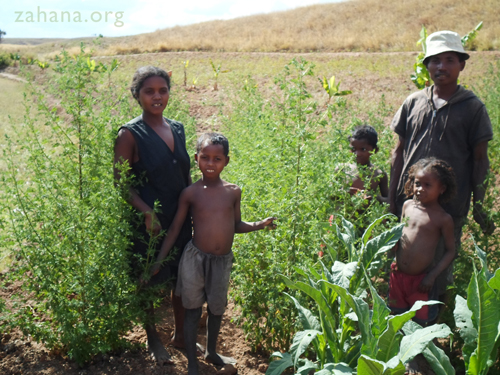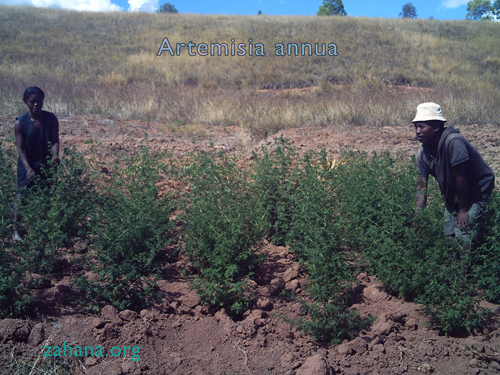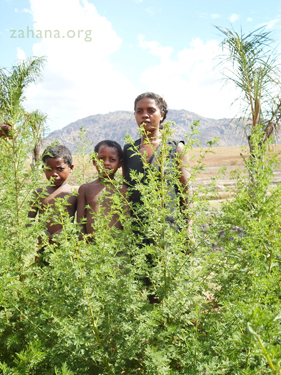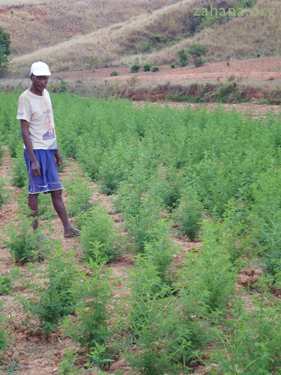Artemisia a success story (and not a Greek Goddess).
A temesia or sweet wormwood (Artemisia annua) is one of the most promising herbal medicines to treat Malaria. Having been used in traditional Chinese medicine for centuries, and with no cure or preventative drug for Malaria in sight, Artemisia has sparked interest in the last few years. It needs to be harvested within a few months of planting (as an annual crop). A few years ago we met a small NGO promoting Artemisia and an income-generating project at a small development fair in Madagascar’s capital Antananarivo.
temesia or sweet wormwood (Artemisia annua) is one of the most promising herbal medicines to treat Malaria. Having been used in traditional Chinese medicine for centuries, and with no cure or preventative drug for Malaria in sight, Artemisia has sparked interest in the last few years. It needs to be harvested within a few months of planting (as an annual crop). A few years ago we met a small NGO promoting Artemisia and an income-generating project at a small development fair in Madagascar’s capital Antananarivo.
We stayed in touch and we had our first official cooperation this year. A company in Madagascar processes the dried plants and produces a drug based on artemisinin, the desired compound. Since Artemesia is in short supply in Madagascar they contract with farmers all over the country to grow it for and with them.
The approach how they work with farmers is different, making a partnership with Zahana attractive for us. Not only do they provide the seeds and the training necessary in growing, harvesting and drying it. They also come to the farmers to pick up their harvest from the villages, a very important factor in a country where transportation is challenging, putting it politely. They also pay the farmers a guaranteed price, agreed upon prior to planting, giving farmers the security of a prospective income without post harvest market fluctuations.
As it turned out this year, growing Artemisia in the climate of our villages is ideal. It is growing well, beyond expectations. It will be ready for harvest within the next two to three weeks (early November 2014).
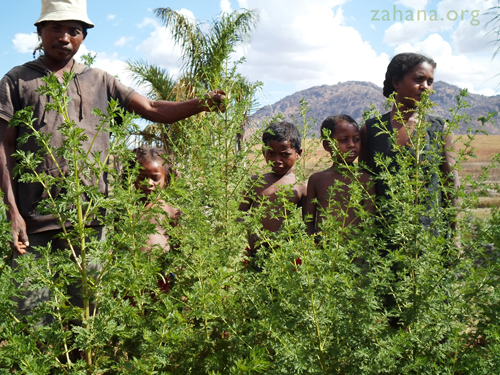 Some of you may remember that we had talked about the “époque dure” or the “hard times” the dry, rainless period facing Malagasy farmers before the new rice-planting season, when people all too often run out of food (September to December, depending on the year’s season). It turns out that the climate during the ‘époque dure’ is very well suited for Artemisia cultivation, when very few other crops grow. The opportunity to grow something that can not only be planted but also harvested and sold for cash in the ‘hard times’, is a godsend for our villagers.
Some of you may remember that we had talked about the “époque dure” or the “hard times” the dry, rainless period facing Malagasy farmers before the new rice-planting season, when people all too often run out of food (September to December, depending on the year’s season). It turns out that the climate during the ‘époque dure’ is very well suited for Artemisia cultivation, when very few other crops grow. The opportunity to grow something that can not only be planted but also harvested and sold for cash in the ‘hard times’, is a godsend for our villagers.
So far our partners, the buyers of Artemisia, had been growing it some 300 miles 500 km (or a two days drive) further south in the country. It is the first time they have worked with farmers in our climate, since Zahana provided access a self-organized strong community.
With more and more farmers interested in growing Artemisia, now that they see the initial success of their neighbors, we are exploring options for building a small scale processing facility, where some of the steps of refinement can be done on location. It would increase the price paid for the product and reduce the amount of bulk needed to be shipped, or transported, (think carbon footprint fueling income generation).
